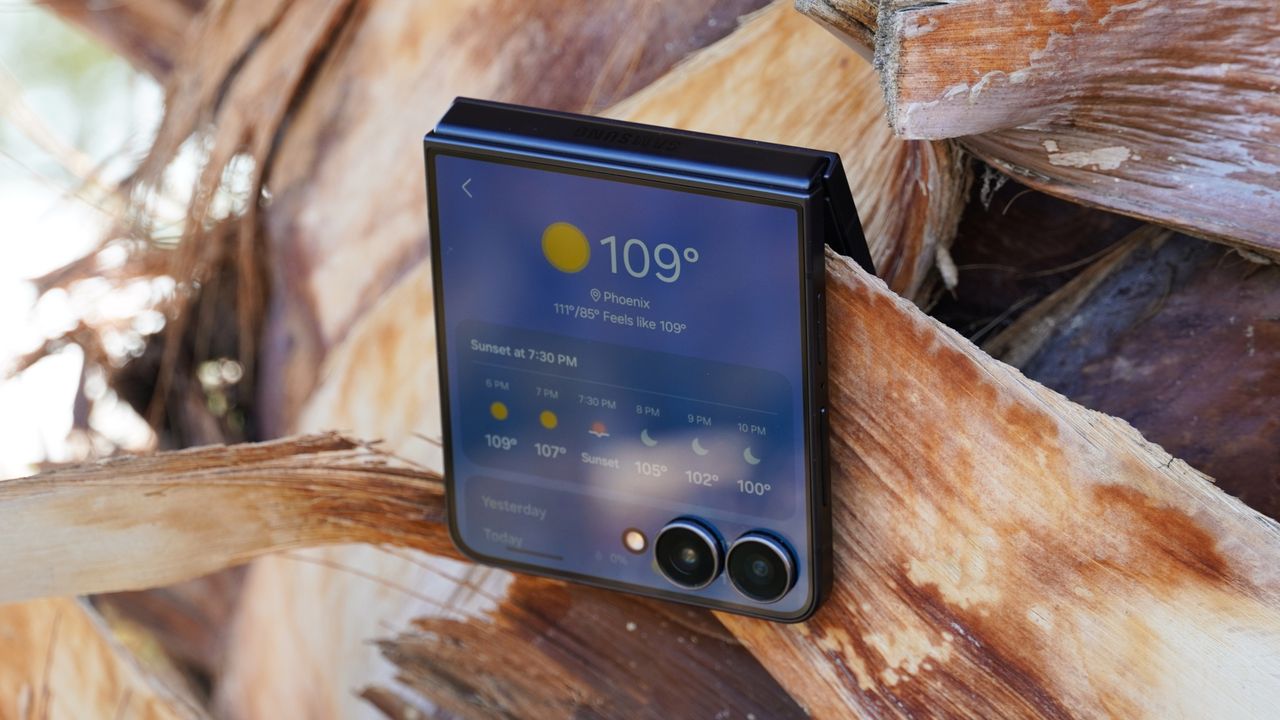
There's a lot of hype around the Samsung Galaxy Z Flip 7, and for good reason — both the Flip 7 and Fold 7 received huge makeovers this year. The Galaxy Z Flip 7 in particular gained two bigger displays, a larger battery, and a slimmer form factor. Understandably, that got fans of clamshell foldables excited.
After a week of using the Galaxy Z Flip 7, I'm here to temper your expectations somewhat. While the expanded cover screen is a visual masterpiece, its software experience actually takes a step backward. In my testing, the extra battery capacity doesn't translate to longer runtimes, perhaps due to the switch to an Exynos processor.
Some upgrades are as good or better than advertised, but once I realized the Galaxy Z Flip 7 won't reinvent the cover screen or significantly improve performance and battery life, I came to love it. Samsung nailed the build quality, durability, and core features, and it lifts the Galaxy Z Flip 7 above competitors like the Motorola Razr Ultra 2025.
Samsung Galaxy Z Flip 7: Price, availability, and specs
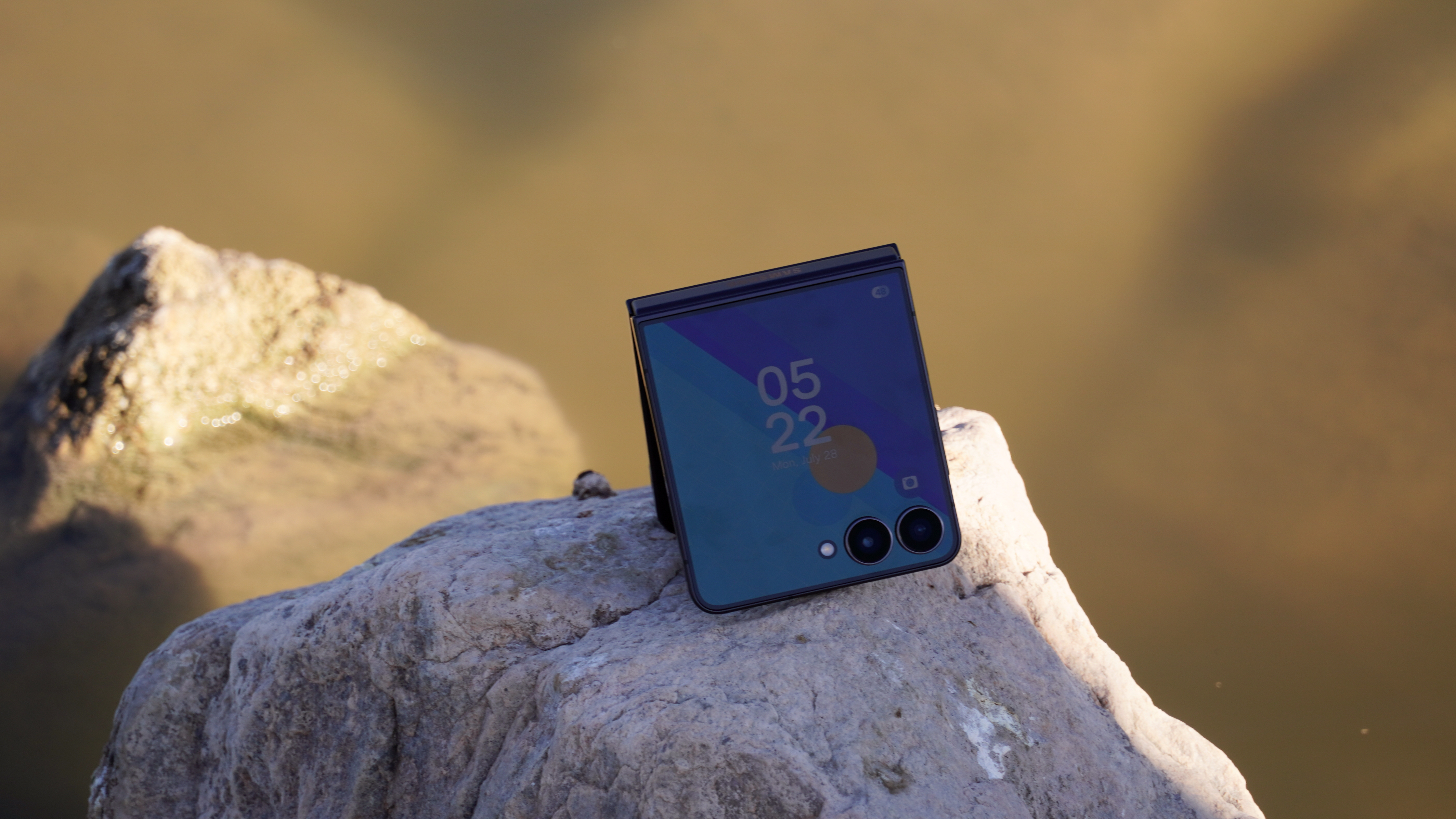
Samsung announced the Galaxy Z Flip 7 on July 9, and it became publicly available as of July 25, 2025. The foldable is priced at $1,099 for the 256GB storage configuration, with an upgrade to 512GB costing an extra $120. You can get it in Blue Shadow, Jetblack, and Coralred colorways, plus a Samsung online exclusive Mint colorway.
The Samsung Galaxy Z Flip 7 is priced exactly the same as the Galaxy Z Flip 6, but you can take advantage of plenty of great deals to get a better price. AT&T will take any Galaxy Z, S, or Note phone in any condition in exchange for credit toward a Galaxy Z Flip 7, all the way up to giving away the phone for free on a variety of plans.
Verizon is offering a similar deal, but you need an Unlimited Ultimate plan to be eligible. T-Mobile will give you the device for free without a trade-in, but you'll need to be on one of the carrier's most expensive plans, costing upwards of $85 per month.
- Samsung Galaxy Z Flip 7 at Samsung for $1,099.99
- Samsung Galaxy Z Flip 7 at AT&T for $1,099.99 (Up to $1,100 off with trade-in)
Category |
Samsung Galaxy Z Flip 7 |
|---|---|
Display |
6.9-inch, 2520 x 1080, FHD+, Dynamic AMOLED 2X, LTPO (1-120Hz) |
Cover display |
4.1-inch Super AMOLED, 60/120Hz, 948 x 1048 |
Operating System |
Android 16 (One UI 8) |
Chipset |
Samsung Exynos 2500 |
RAM |
12GB |
Storage |
256GB, 512GB |
Rear Camera 1 |
50MP, f/1.8 wide |
Rear Camera 2 |
12MP, f/2.2 ultrawide |
Front-facing Camera |
10MP, f/2.2 wide |
Battery |
4,300mAh |
Charging |
25W wired charging, 10W wireless charging, 4.5W reverse wireless charging |
Weight |
188g |
Dimensions (folded) |
85.5 x 75.2 x 13.7 mm |
Dimensions (unfolded) |
166.7 x 752.2 x 6.2 mm |
Protection |
IP48 |
Colors |
Blue Shadow, Jetblack, Coralred |
Samsung Galaxy Z Flip 7: Network and connectivity

- The Galaxy Z Flip 7 supports 5G, Wi-Fi 7, and Bluetooth 5.4 (plus LE).
- I tested the phone on AT&T's 5G Turbo network and saw download speeds upwards of 300Mbps.
Connectivity is an underrated part of smartphones, and yet, it's the entire point. Like many of the best phones in 2025, the Galaxy Z Flip 7 supports 5G and Wi-Fi 7. I used the phone primarily with my Wi-Fi 6E mesh network, and was able to take full advantage of my 1-gig internet connection at home. Samsung also supports Bluetooth 5.4 and Bluetooth Low Energy, which is used to connect to your favorite devices and also for Auracast audio sharing in Android 16.
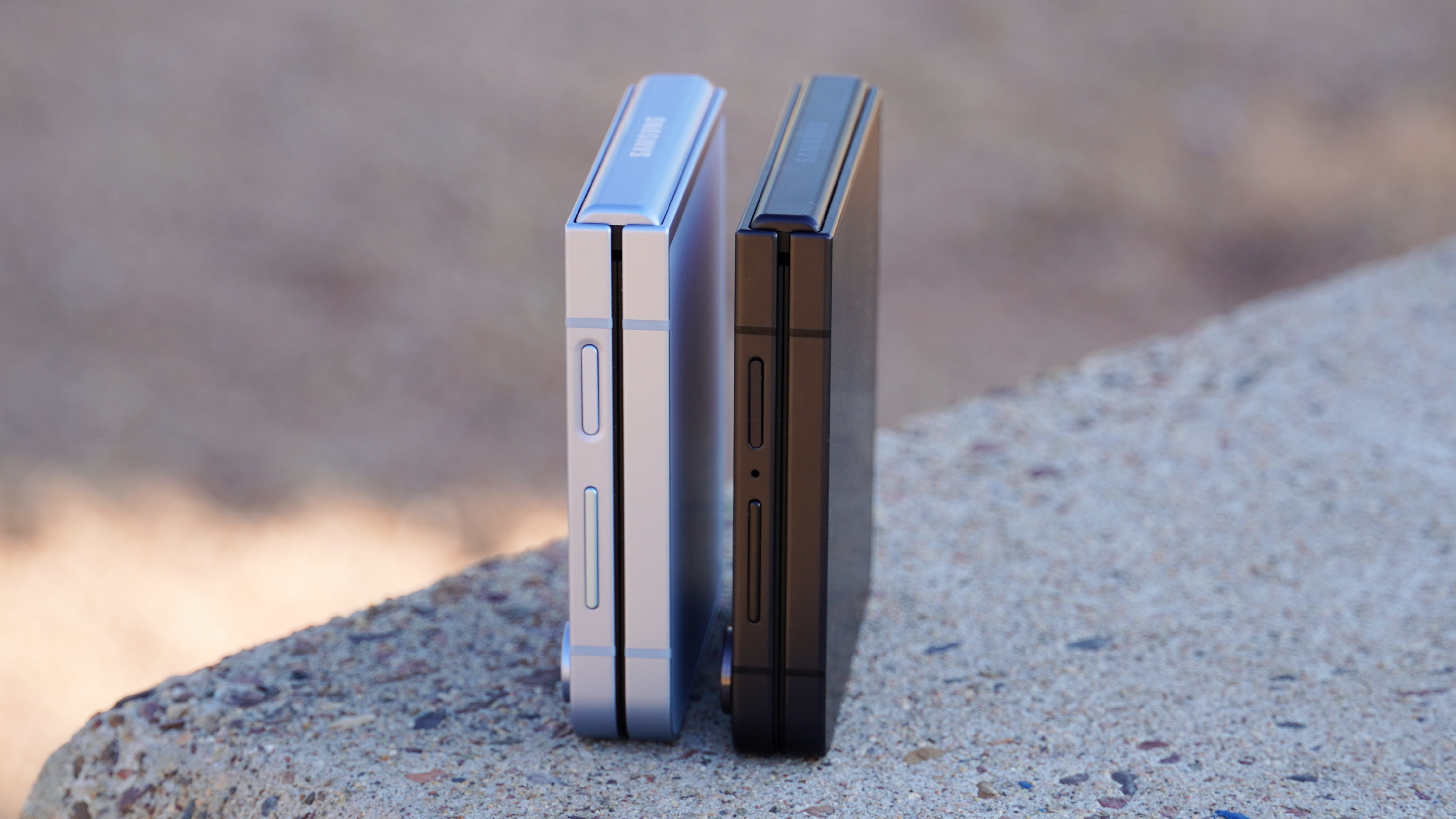
I tested a Galaxy Z Flip 7 review unit from AT&T, and used its 5G Turbo network throughout the review period in addition to my personal AT&T line. To gauge how well both the phone and the network performed, I ran around the Phoenix metro, testing my 5G speeds as I went. They were never lower than 150Mbps and peaked at 300Mbps, which are excellent speeds. While theoretical 5G speeds may be higher, these are great figures for real-world 5G usage.
Between the device's Exynos 5400 modem and AT&T's 5G Turbo network, my wireless experience was rock solid. I didn't notice any dropoff compared to the Galaxy Z Flip 6, which uses a Qualcomm modem integrated into the system-on-a-chip. Thanks to the Exynos 5400, the Galaxy Z Flip 7 supports satellite connectivity for the first time.
Samsung Galaxy Z Flip 7: Design and displays
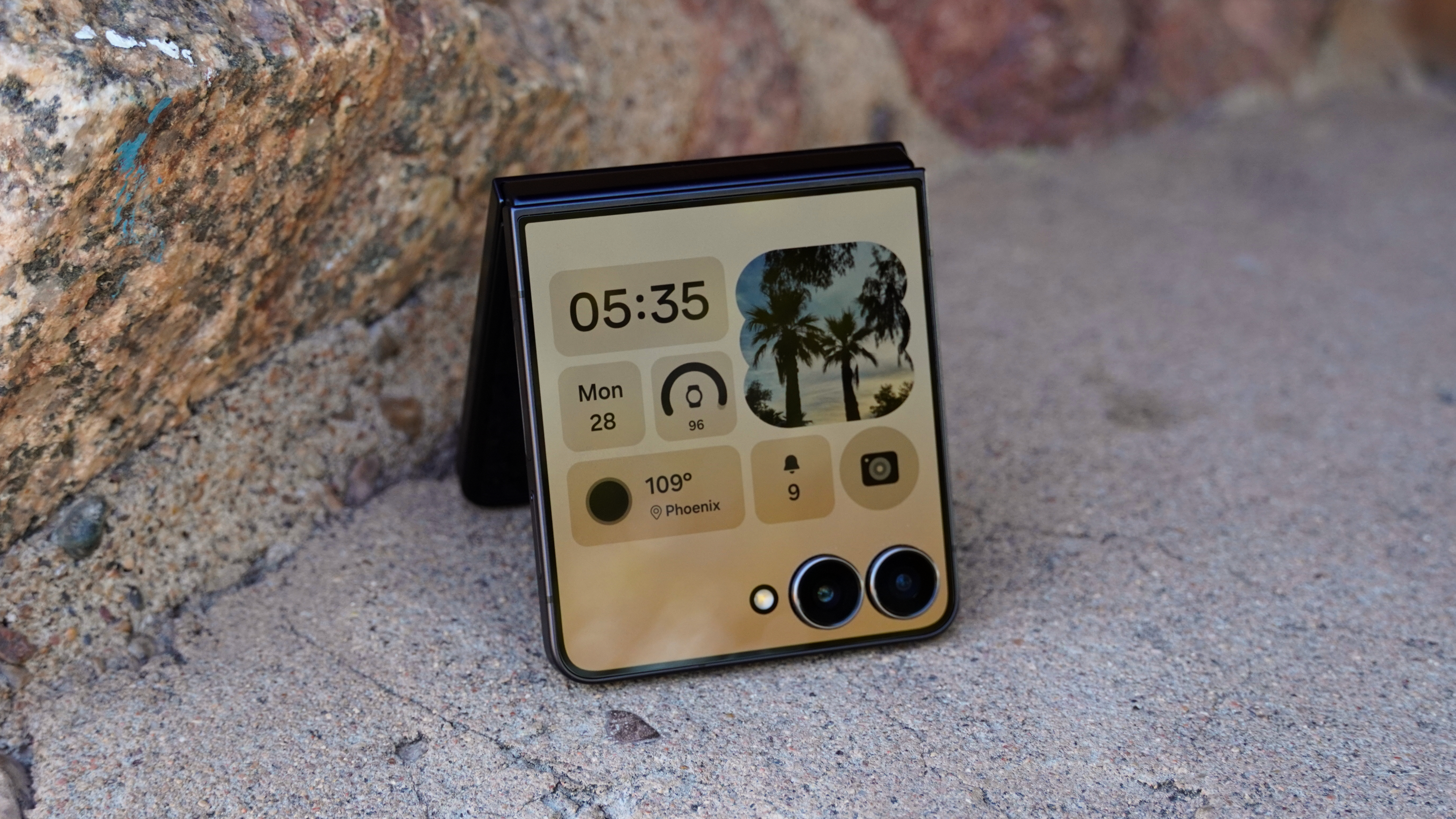
- The 4.1-inch cover screen is beautiful, but it's still extremely software-limited.
- The wider aspect ratio of the 6.9-inch main display is a game-changer for usability.
- There's a premium feel and a form factor that's only 13.7mm thin when folded.
It took Samsung a few generations, but the Galaxy Z Flip 7 finally feels like a traditional smartphone thanks to bigger displays with wider aspect ratios. The inner screen measures 6.9 inches, and critically, it's 68.6 millimeters wide — only a smidge narrower than the Galaxy S25 Plus and Edge. The Galaxy S25 Edge has become my preferred daily driver in 2025, and I was able to switch to the Galaxy Z Flip 7 easily due to the similar-sized screens.
Typically, consumers prefer bigger screens, and that's why the Galaxy Z Flip 7 finally matching up with Plus-sized phones is a big deal. At its core, the main display is still a Dynamic AMOLED 2X panel capable of providing 120Hz variable refresh rates, supporting HDR10+, and peaking at 2,600 nits of brightness.
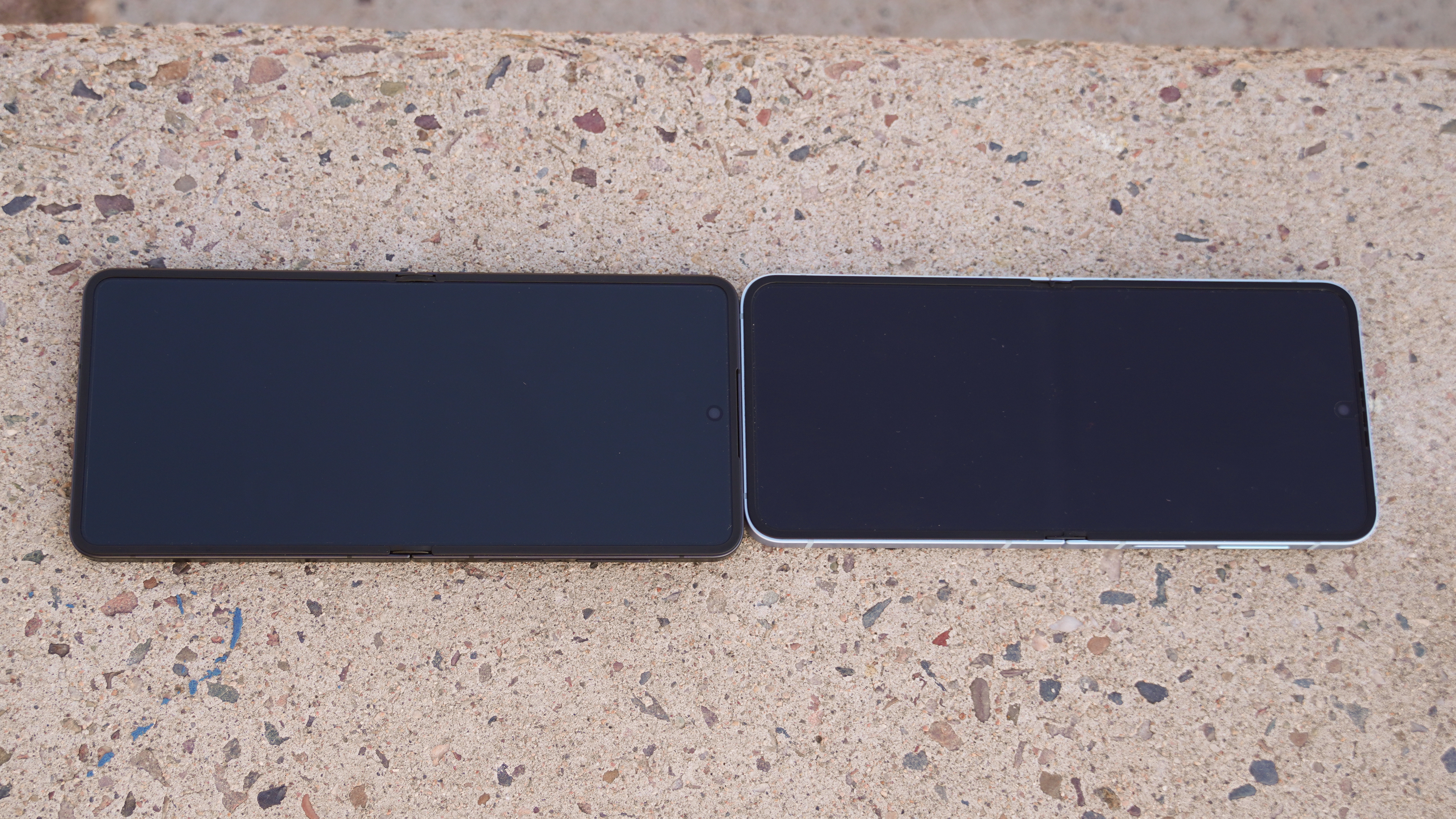
The crease is nearly gone, to the point where I caught myself mistaking it for a slab phone and putting the Galaxy Z Flip 7 in my pocket without shutting it.
Furthermore, the Galaxy Z Flip 7 cover screen can now hit 120Hz refresh rates and 2,600 nits of peak brightness, which are nice hardware upgrades.
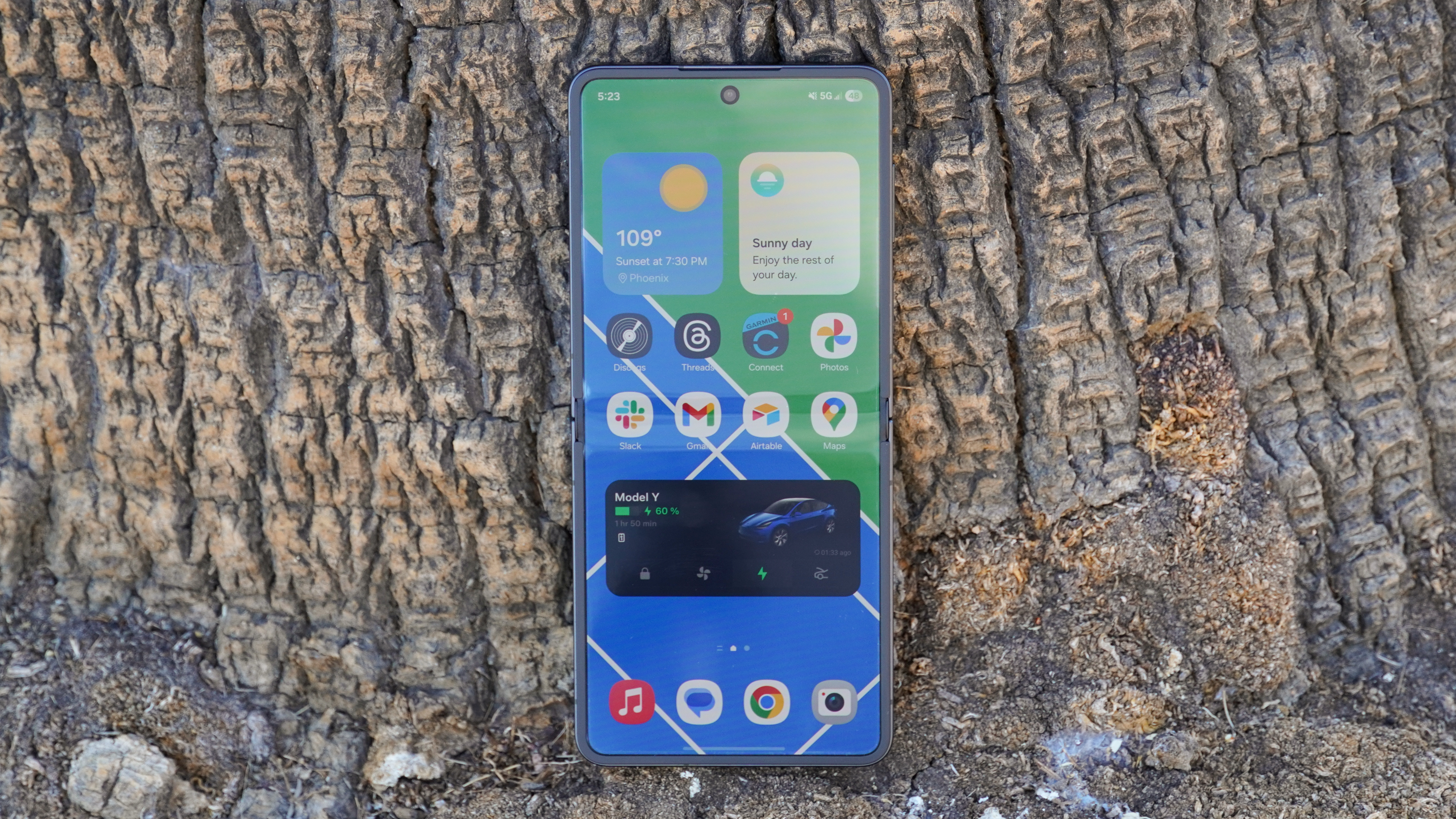
The cover screen is bigger, too, now measuring 4.1 inches. That's technically bigger than the Razr Ultra 2025's cover screen, but it won't matter. There still isn't a whole lot you can do on a Galaxy Z Flip cover screen, and the new one doesn't do anything to change that. In fact, you can do less on the Flex Window with the Galaxy Z Flip 7 compared to the Galaxy Z Flip 6.
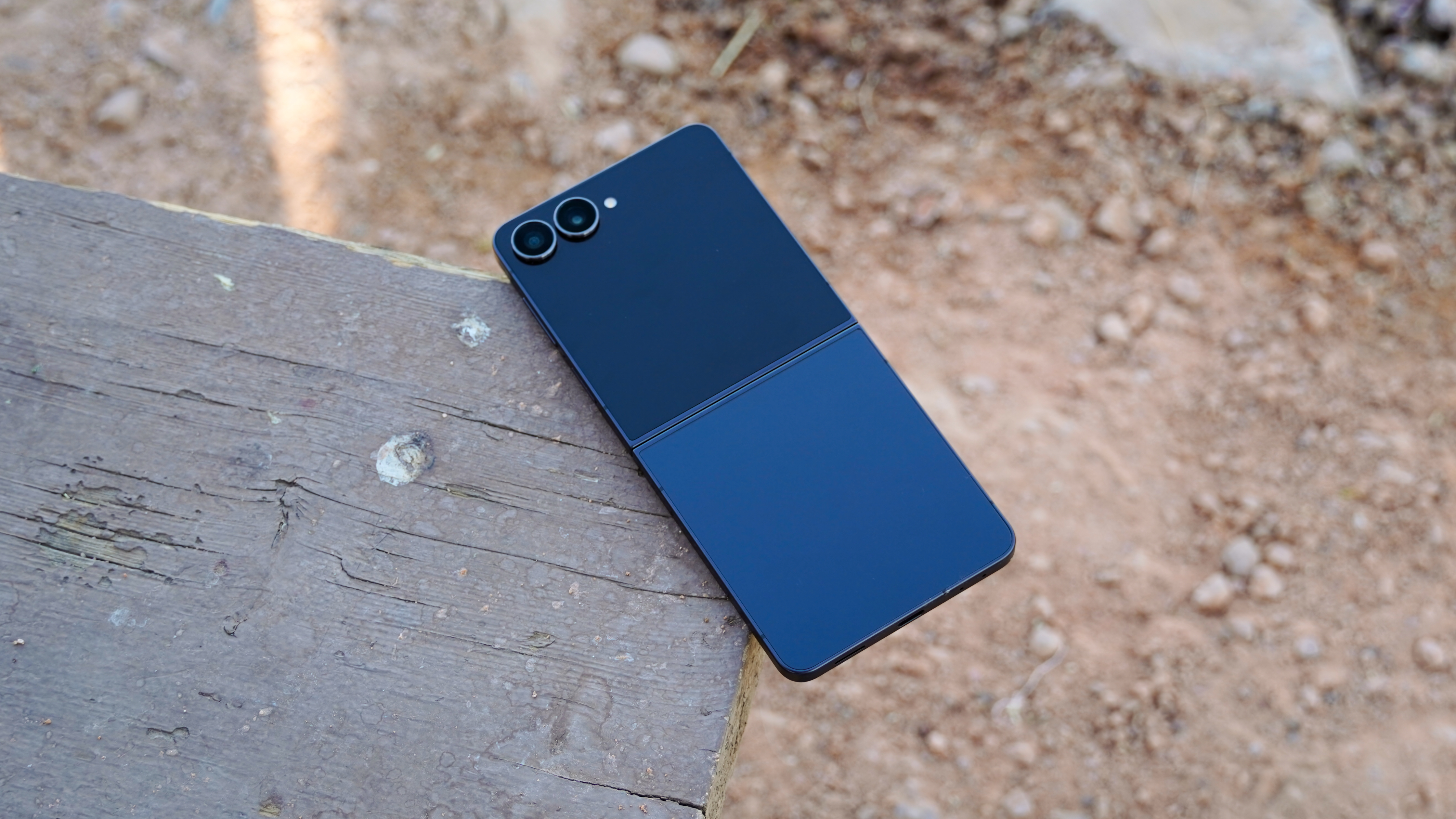
The chassis is thinner this year, measuring only 13.7mm when closed. It's not a groundbreaker like the Galaxy Z Fold 7, but Samsung has less room to work with here. I love Samsung's foldable build quality and the Galaxy Z Flip 7 is no exception — there's no gap between the two sides when closed and the hinge feels solid and has a good "snap" sound when you shut it.

The company offers a free screen protector replacement to all Galaxy Z phones within a year of purchase, too. Considering the flexible screen protector is the most common failure point, this is excellent.
Samsung Galaxy Z Flip 7: Performance
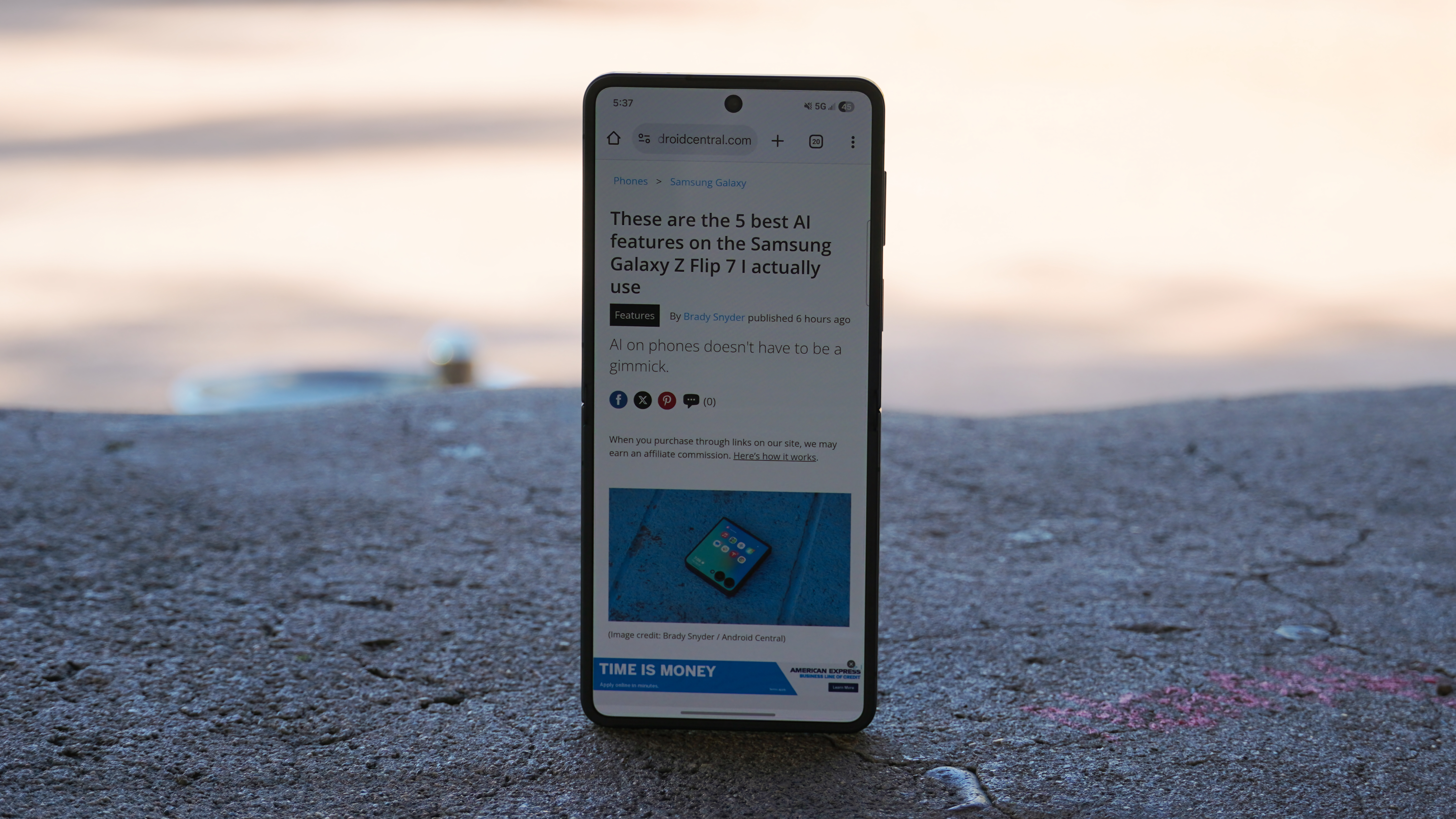
- The Samsung Galaxy Z Flip 7's Exynos 2500 processor is very competitive in the clamshell foldable category.
- The chip may have a tendency to overheat in challenging conditions.
- The Galaxy Z Flip 7 performs similarly to the Motorola Razr Ultra 2025 in benchmark tests.
Samsung switched from Qualcomm to its own Exynos 2500 processor for the Galaxy Z Flip 7. People have strong opinions on Exynos chips, and there's some truth to the belief that they're worse than Snapdragon. Starting with the bad, I'll say that my Galaxy Z Flip 7 tends to overheat more than the Galaxy Z Flip 6. There's also reason to believe the Exynos 2500 chugs more battery than comparable Qualcomm SoCs.
Those are all the gripes I have with my Exynos-powered Galaxy Z Flip 7. Everything else is stellar, from daily use to synthetic benchmark tests. I didn't notice the switch from the Galaxy Z Flip 6 to the Galaxy Z Flip 7, or a difference from the various Snapdragon 8 Elite phones I've used in 2025. That's a good thing — it means you can stop worrying about the processor.
Category |
Samsung Galaxy Z Flip 7 (Exynos 2500) |
Samsung Galaxy Z Flip 6 (Snapdragon 8 Gen 3 for Galaxy) |
Motorola Razr Ultra 2025 (Snapdragon 8 Elite) |
Motorola Razr 2025 (MediaTek Dimensity 7400X) |
Samsung Galaxy Z Fold 7 (Snapdragon 8 Elite for Galaxy) |
|---|---|---|---|---|---|
Geekbench 6 (single-core) |
1,849 |
2,248 |
2,682 |
1,082 |
3,019 |
Geekbench 6 (multi-core) |
6,822 |
6,940 |
8,102 |
3,064 |
9,557 |
Geekbench AI (Quantized Score) |
3,581 |
2,676 |
2,513 |
2,143 |
4,969 |
3DMark Wild Life Extreme (score) |
4,400 |
4,275 |
4,881 |
1,022 |
5,640 |
3DMark Wild Life Extreme (FPS) |
26.35 |
25.60 |
29.23 |
6.12 |
33.77 |
The Motorola Razr Ultra 2025, powered by the Snapdragon 8 Elite, beats the Galaxy Z Flip 7 in single- and multi-core Geekbench 6 benchmarks, according to our latest tests. We've hypothesized before that Motorola may be limiting the Razr Ultra 2025's chip to control thermals and power, but this might have changed since our initial review. Now, the Ultra is performing closer in line with other 8 Elite phones, besting the Flip 7.
Meanwhile, the Flip 7 beats the Flip 6 in Geekbench AI tests by a huge margin — over 1,000 points. Thus, the Galaxy Z Flip 7 may be the most powerful flip phone for AI in North America, even without Snapdragon.
Samsung Galaxy Z Flip 7: Battery life
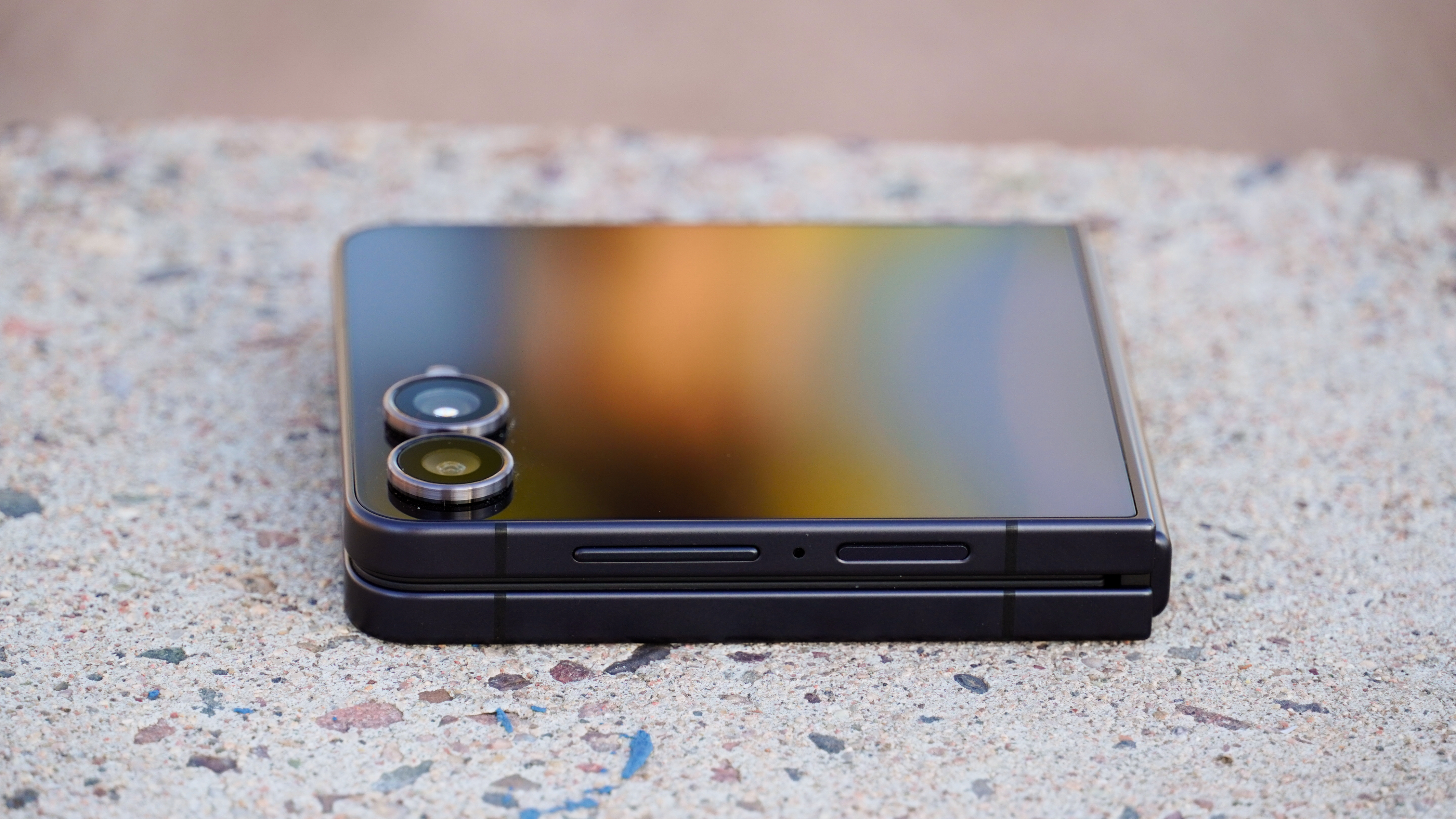
- Samsung added a larger 4,300mAh battery to the Galaxy Z Flip 7 this year.
- Battery life will be similar to the Galaxy Z Flip 6 on average, possibly due to the Galaxy Z Flip 7's Exynos 2500 processor drawing more power.
Battery life on the Galaxy Z Flip 7 has been good, but not great. I can get a full day of use, equivalent to around six hours of screen-on time, on a full charge. There's not much room for error, though.
The Galaxy Z Flip 7 has a larger 4,300mAh capacity than the Galaxy Z Flip 6, but our battery test shows the two are nearly identical in consumption. For this test, I streamed a 4K HDR video on both phones at full brightness, checking in on usage every hour.
Device |
Time |
Battery Percentage |
Difference |
|---|---|---|---|
Samsung Galaxy Z Flip 7 |
1:20 |
100% |
|
2:20 |
86% |
-14% |
|
3:20 |
70% |
-16% |
|
Samsung Galaxy Z Flip 6 |
1:20 |
100% |
|
2:20 |
86% |
-14% |
|
3:20 |
72% |
-14% |
At the end of the two-hour video, the Galaxy Z Flip 6 actually had more battery left than the Galaxy Z Flip 7. I suspect that the Exynos 2500 is using more power, so there will be no considerable difference in battery life between models in real-world use.
Samsung Galaxy Z Flip 7: Cameras
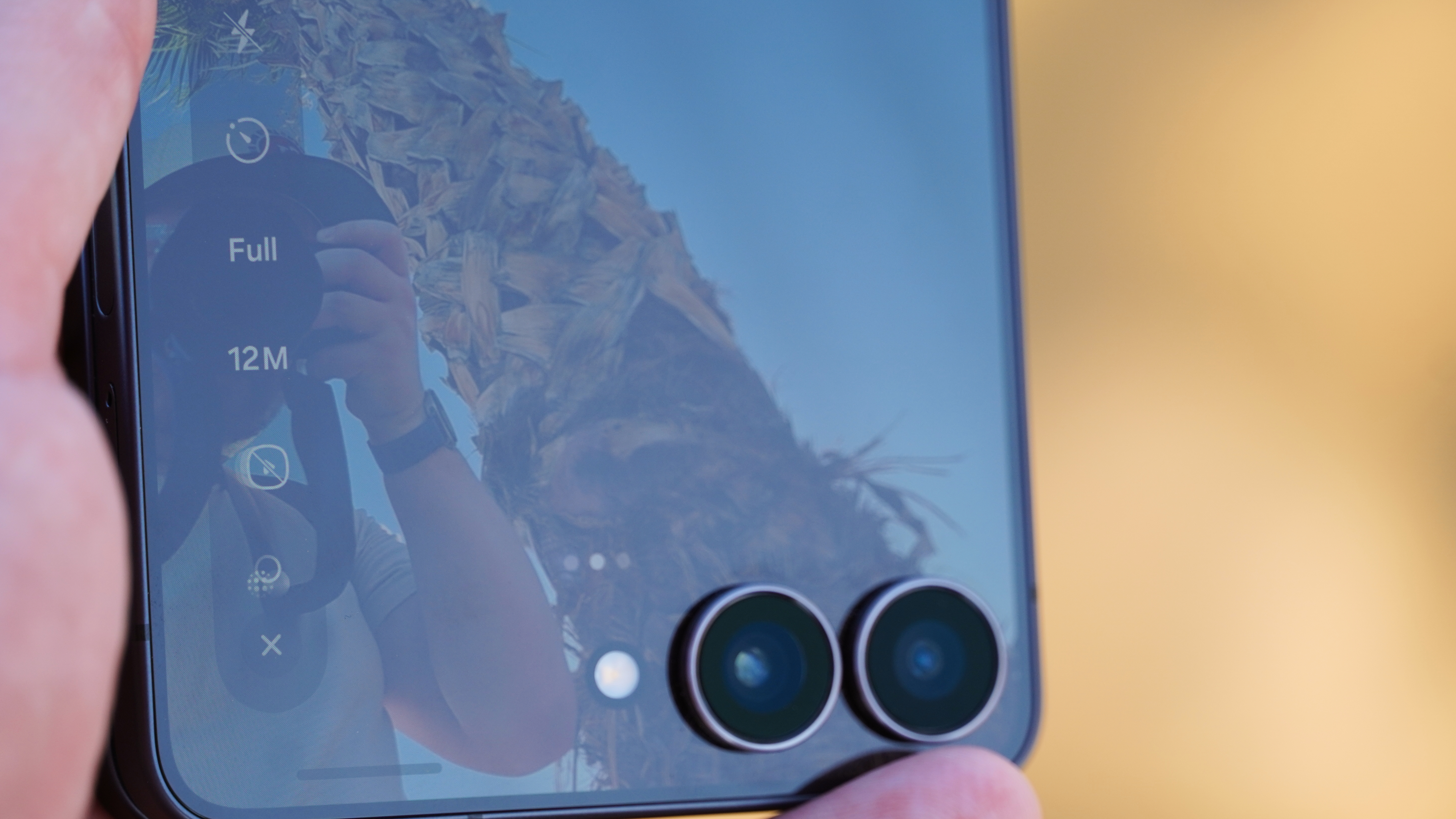
- Samsung is still rocking a 50MP main camera and a 12MP ultrawide on the Galaxy Z Flip 7.
- There are a lot of neat camera features that take advantage of the Galaxy Z Flip 7's foldable form factor.
Samsung stuck with the same cameras as last year for the Galaxy Z Flip 7: a 50MP primary camera, a 12MP ultrawide, and a 10MP selfie camera. As you might expect, there are no noticeable differences in shots between models. Sometimes the color science appears different in one or another, but it's generally consistent.

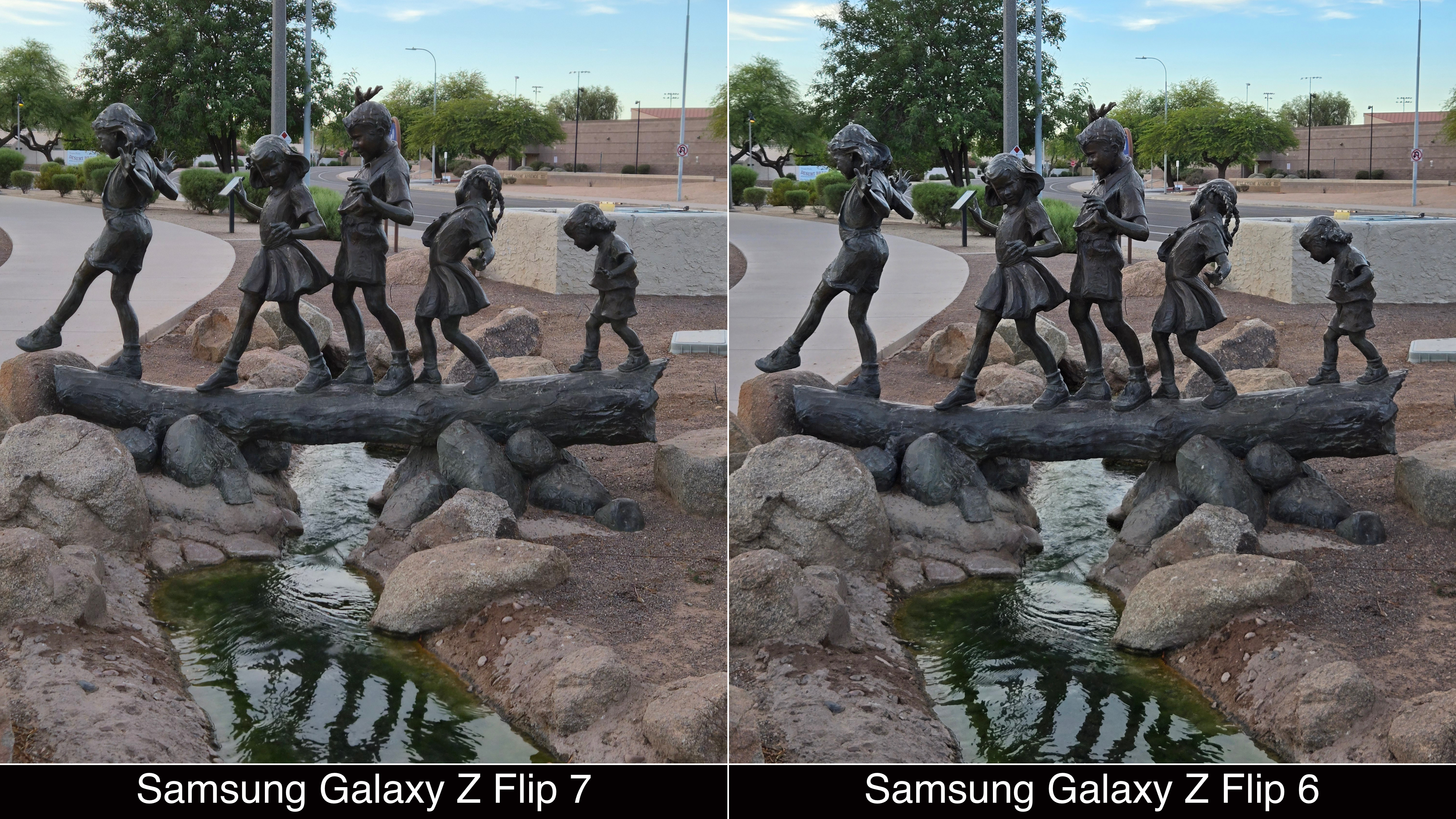
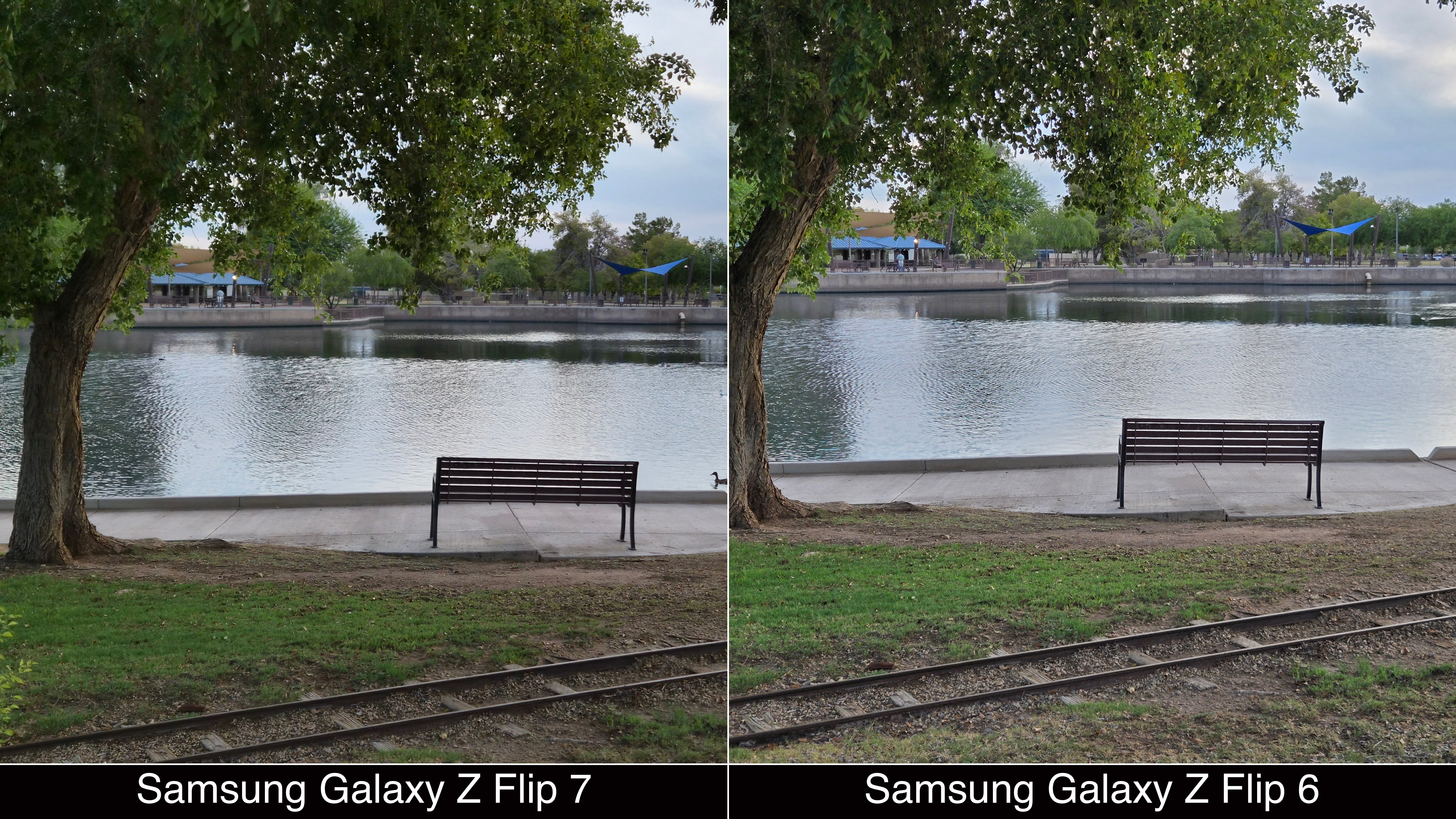
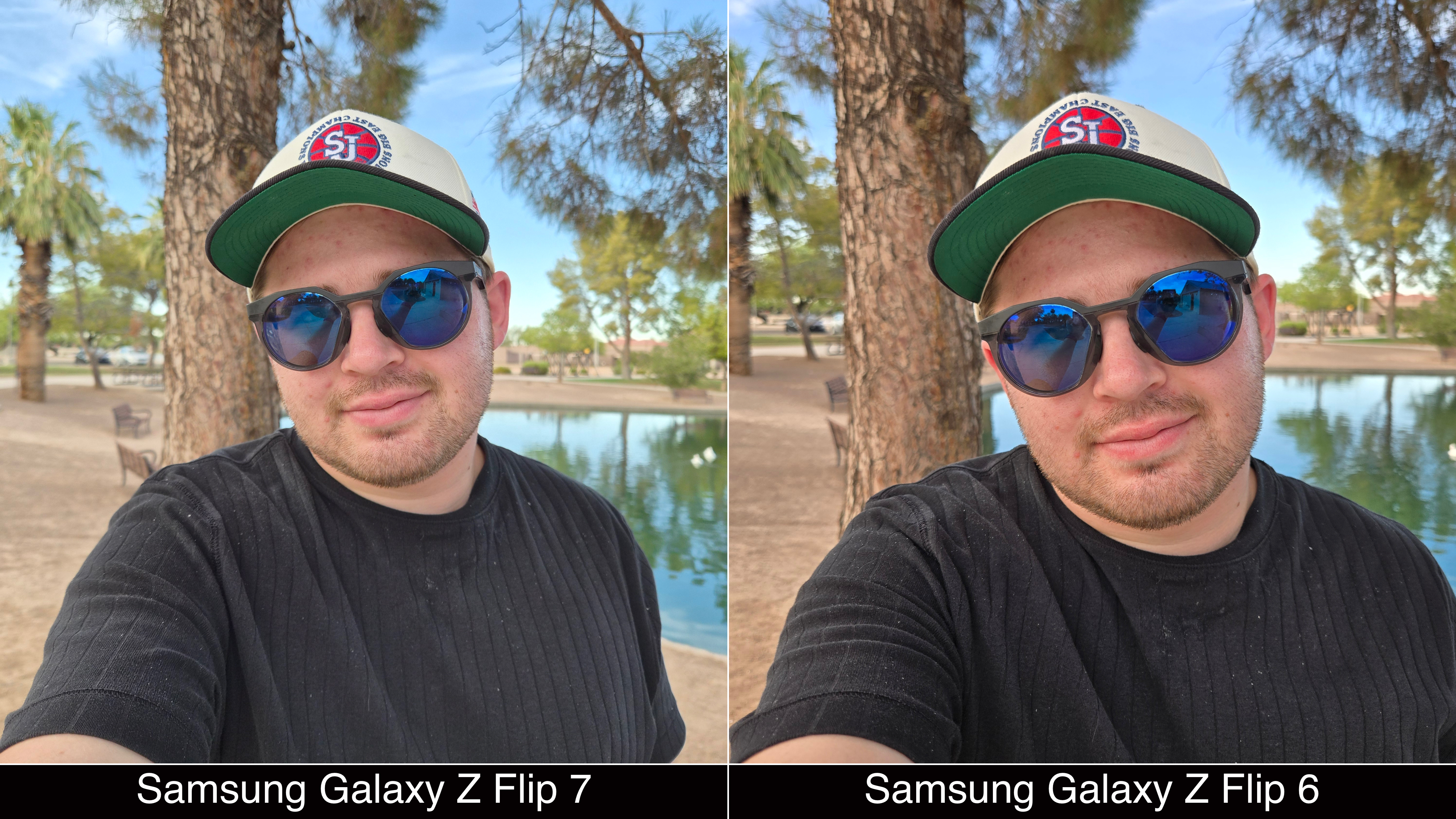
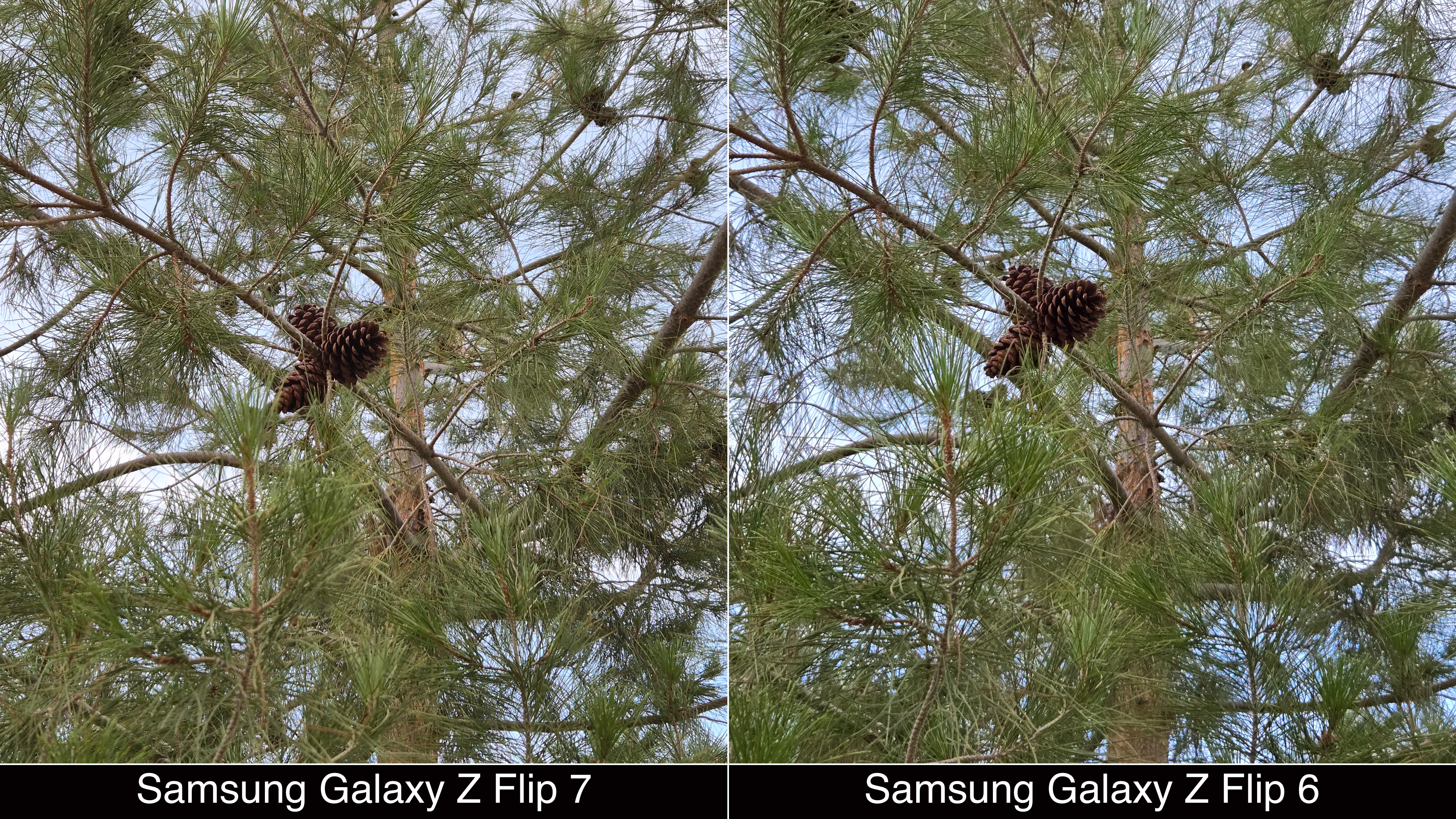
There are neat software features like Auto Zoom and Camcorder Mode that leverage the Galaxy Z Flip 7's form factor. These are excellent, and the phone is a great camera due to the intangibles. You can use the rear sensors as a selfie cam or prop the phone up by itself.
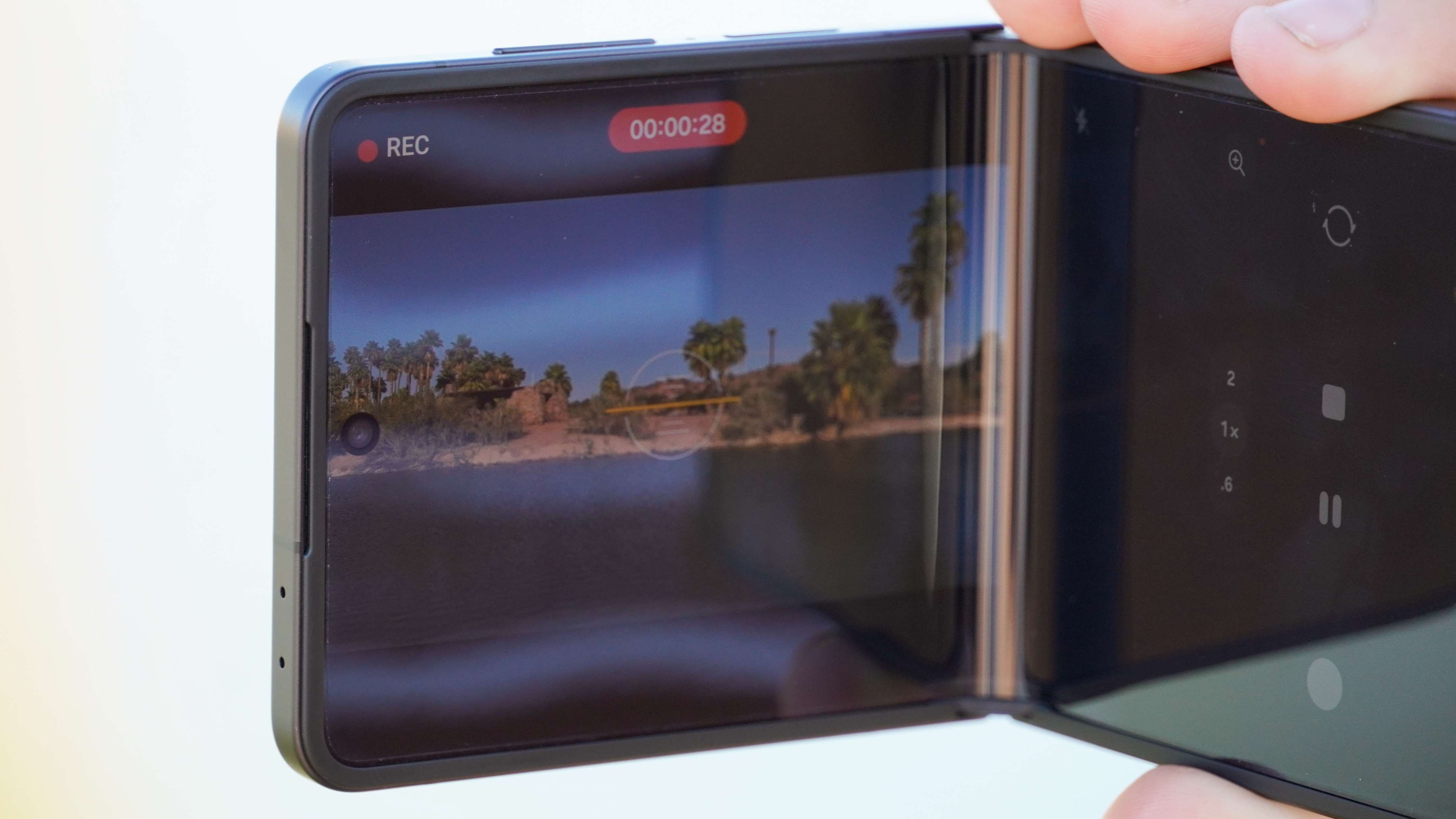
The hardware won't beat the cameras on a traditional phone, but the software and tricks might.
Samsung Galaxy Z Flip 7: Software
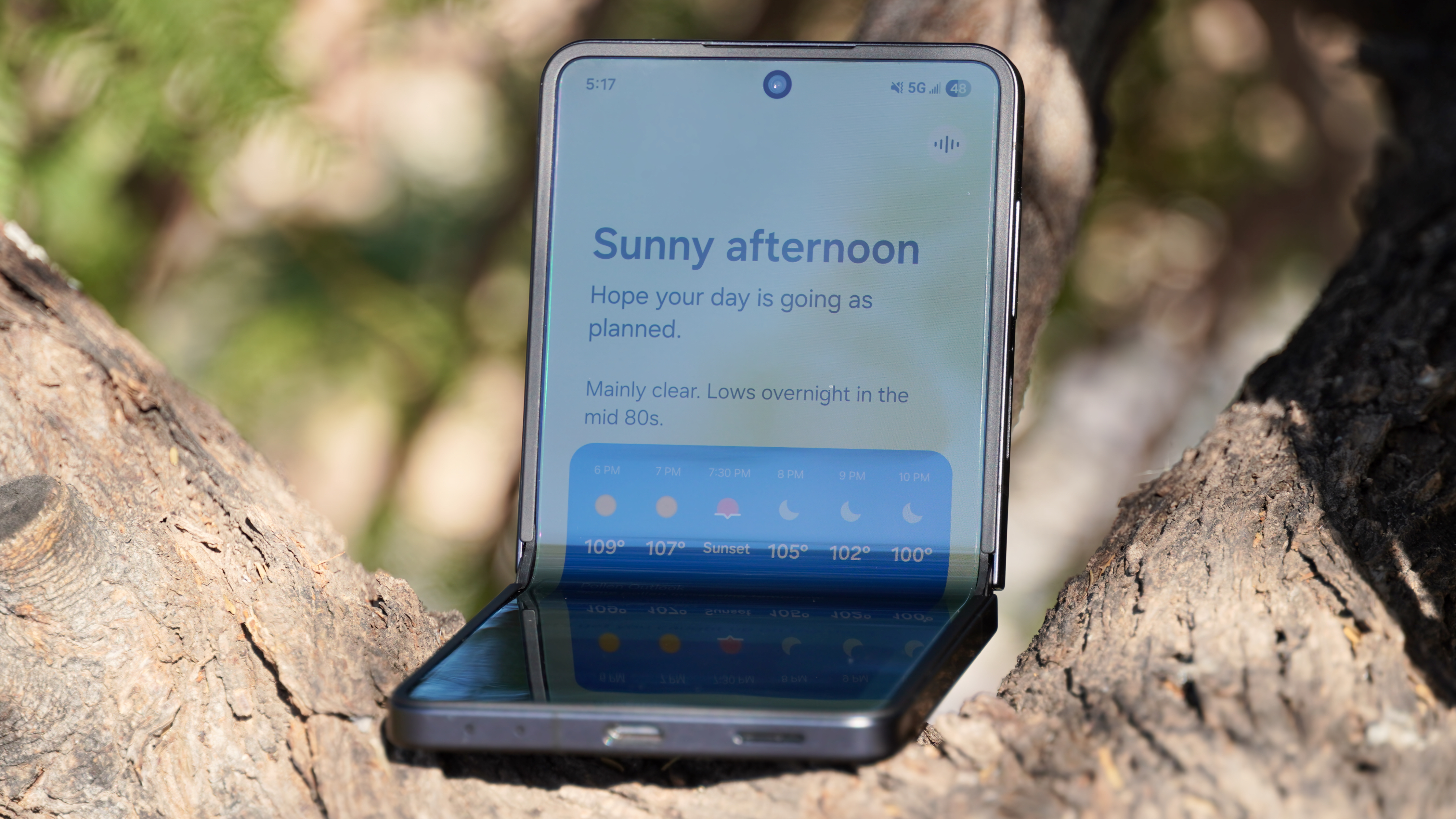
- Gemini Live is now fully optimized for the cover screen with multimodal support.
- I don't find Now Brief or the Now Bar useful, but I do use plenty of other lesser-known Galaxy AI features.
One UI 8 on the Galaxy Z Flip 7 is a mixed bag: great on the main screen, lackluster on the cover screen. It's also not much different from One UI 7, so owners of recent Samsung phones should be at home.
It's somewhat disappointing that you still have to use Labs and MultiStar features just to open an app on the cover screen. However, it's not a dealbreaker for me. I can live with the weak cover screen software experience simply because the Flex Window is better suited for basic tasks like responding to messages anyway.
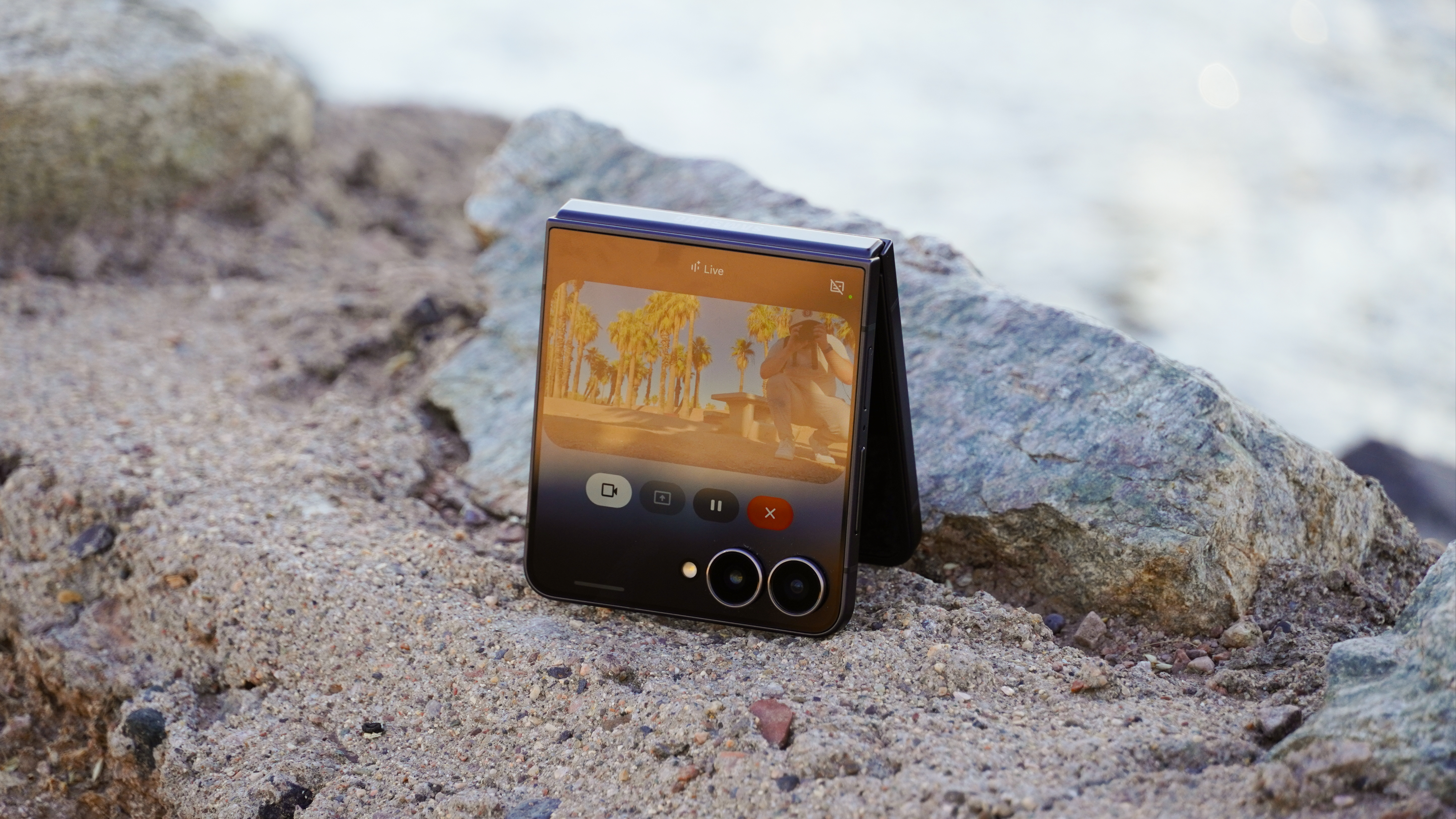
One great thing about the cover screen is multimodal Gemini Live, which can be used with live video streaming. It's easy to toggle in a pinch using the side button without opening the phone. In fact, Samsung's Galaxy AI suite is helpful overall.
You'll also be happy to know that software is supported for up to seven years, which should cover the life of the phone.
Samsung Galaxy Z Flip 7: Competition

Samsung is mostly competing with the Motorola Razr Ultra 2025 in the U.S. It could also compete with the base Razr 2025, pictured above, and the midsize Razr Plus 2025. The appeal of all three Moto phones is their software versatility and an unrestricted cover screen. Additionally, the Razr Plus has a telephoto camera, unlike the Galaxy Z Flip 7.
Samsung has the durability and software support covered by comparison — it has been making foldables for years now, and I think its experience shows in the Galaxy Z Flip 7's build quality. This is the foldable I trust to last a half decade or more. Meanwhile, my Motorola Razr 2025 review unit is already showing screen protector lines on the folding display, leading me to question the brand's longevity.
Even the top-end Razr Ultra 2025 will only get three years of full OS upgrades, whereas the Galaxy Z Flip 7 will get seven.
Samsung Galaxy Z Flip 7: Should you buy it?
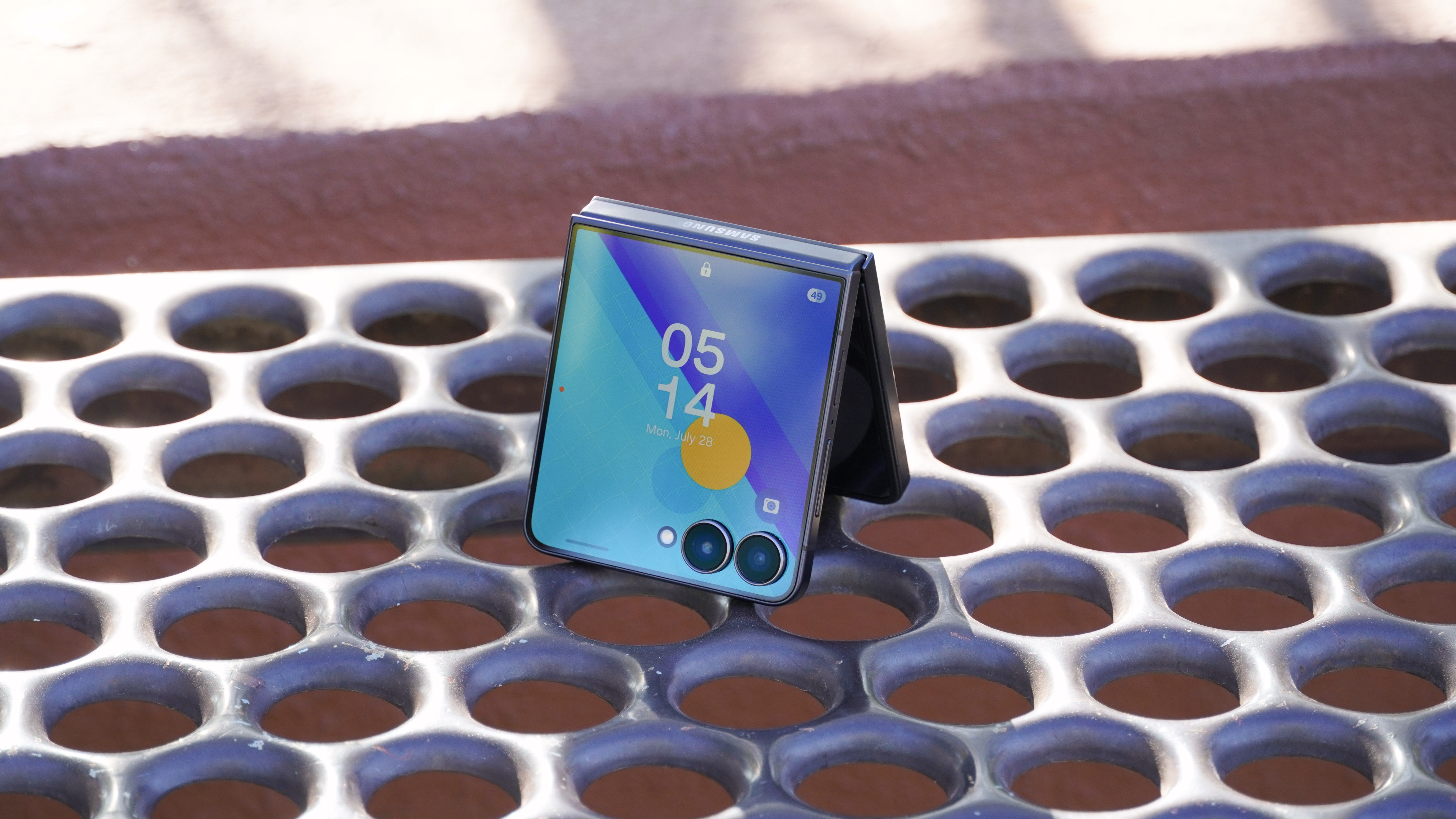
You should buy this if...
- You don't plan to run full-fledged apps on your cover screen often.
- You value Samsung's foldable design and durability standards, or you want a long software support window.
- You've wanted a Galaxy Flip with a main display that feels like a Galaxy S25 Plus.
You shouldn't buy this if...
- You need an unrestricted and versatile cover screen experience.
- You want the best mobile camera hardware.
- You value performance and battery life above all else.
I would've loved to see Samsung do more with the Galaxy Z Flip 7. Better cover screen software, improved camera hardware, and increased performance and thermal management would've been at the top of my list of requests. With that being said, I can't ignore the fact that absolutely none of those things are dealbreakers for me.
On a clamshell foldable, I want a fantastic main display, decent performance and battery life, good rear cameras, and the ability to run apps on the cover screen in a pinch. I also need top-notch durability and long software support. The Samsung Galaxy Z Flip 7 handles all of these needs, and it particularly nails the last two compared to the competition.
I'm still sticking with the Galaxy S25 Edge, because I prefer thinness over compactness. If you're the opposite and love flip phones, the Samsung Galaxy Z Flip 7 might be the best one to buy.
Samsung's best Flip
The Samsung Galaxy Z Flip 7 is the brand's best flip phone yet, with excellent build quality and two larger displays. You won't even notice the switch from Qualcomm to Exynos, but you will notice plenty of other things, like a thinner and lighter design and lengthy software support.






